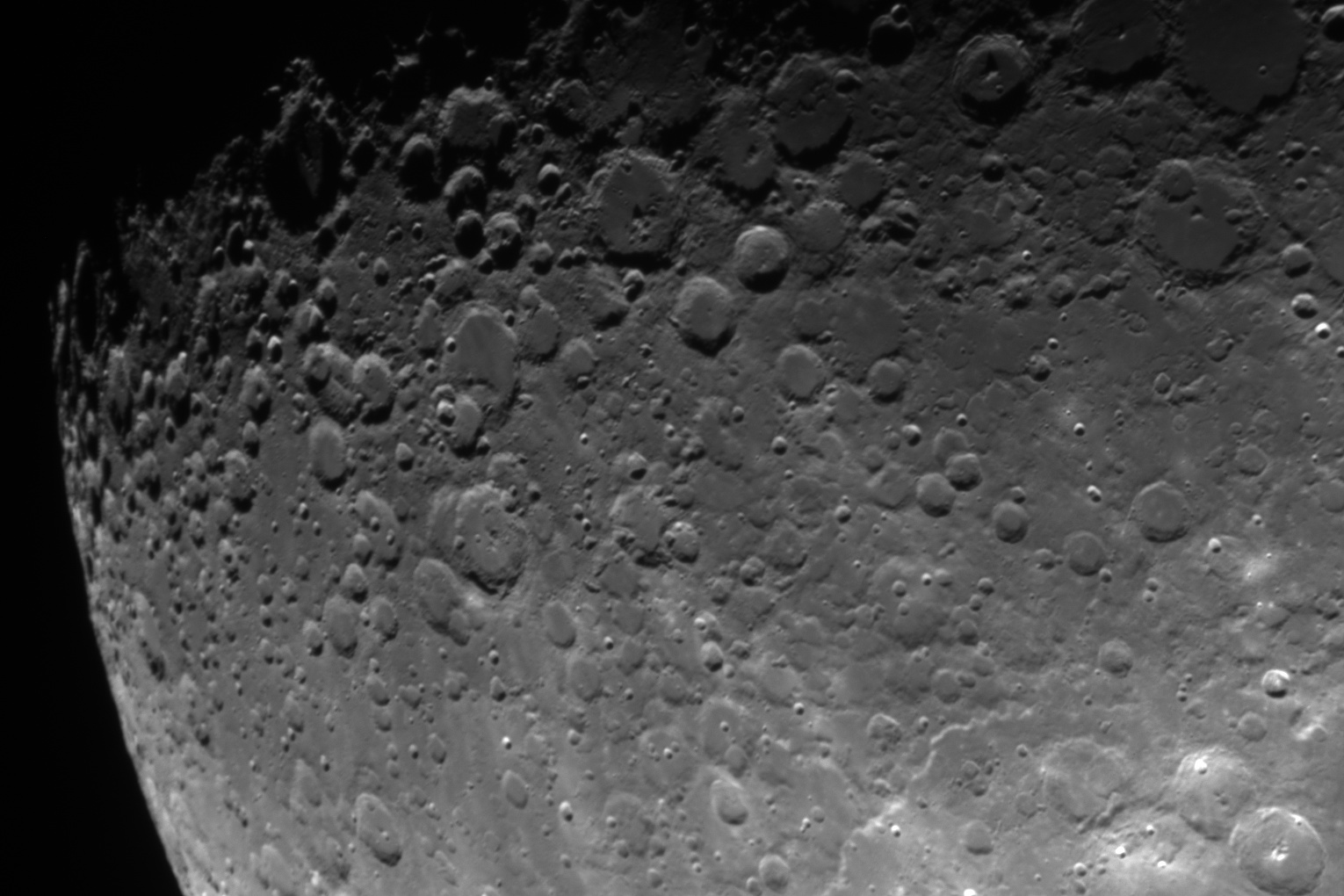
This image of the Moon shows the south pole region and southeast highlands of the Moon. Mouse over this image and an annotated version of the image appears that has features labeled. The Moon has a total of 1,940 named features, and 1,545 of those named features are craters. The highlands of the Moon are the most heavily cratered areas of the Moon, as demonstrated by this image.
Walter crater, in the upper center of this image, is a walled-plain with eroded walls more than 4 km above the rough and hammocky floor. The walls are divided by valleys in several places. The cluster of craters and rough terrain surrounding them in the lower-right quadrant of the crater in this image are an unusual feature of this crater. A line of three craterlets breaks up the smooth floor of the crater to the southeast of this terrain. Walter crater was named after Bernard Walter, who was a 15th century german astronomer. To the upper right of Walter lies Regiomontanus crater, with an oval shape that is 126 km wide east-west and 110 km wide north-south. The walls of Regiomontanus are eroded significantly. The irregular walls reach a maximum height of about 1.7 km in certain places. The off-center mountain inside this crater is notable because it has a summit crater designated Regiomontanus A. The summit crater Regiomontanus A was once considered to be proof of volcanic activity on the Moon, because it looks like an ancient volcano cone. However, it is now generally accepted that it is an impact crater, and is slightly offset from the summit of the central peak. The walls of Regiomontanus are highly degraded, and the crater is overlapped by Purbach crater.
Rupes Altai is a 3,000 foot high cliff that extends for 291 miles from the end of the crater chain Catena Albufeda all of the way to the north of Piccolomini (not shown in this image). This escarpment follows a curve of radius centered on Mare Nectaris. Rupes Altai is one part of a multi-ring structure surrounding the Nectaris Basin. (The best preserved example of this type of multi-ring structure is Mare Orientalis.) This is believed to be the result of a slump-fault rather than the result of up-lifting of the crust. Rupes Altai is one of only four lunar escarpments and rilles that is not named after the closest appropriate major feature, (for example, Rima Hyginus is named after Hyginus Crater). Rupes Altai seems to frame the striking arrangement of Theophilus, Cyrillus and Catharina craters. These three craters are much more interesting when they are illuminated with a lower sun angle than is the case in this image. The prominent mountain peak Mons Penck to the upper right of Cyrillus crater is 12,100 feet tall.
The large crater Theophilus is shown in the lower right-hand portion of this image. Apollo 16 landed 300 km west of Theophilus on April 21, 1972. The LEM Orion carried Young and Duke to the surface of the Moon while Mattingly orbited overhead in the caspule Casper. The three adjacent craters Ptolemaeus, Alphonsus and Arzachel can be seen at the top right edge of this image. Immediately to the right of Albategnius crater (shown in the top right-hand portion of this image) is an ancient crater known as Hipparchus (which is just outside the field of view this image).
Moretus crater is located near the south pole in a heavily impacted region on the Moon. This 71 mile wide crater has a central peak that rises 1.3 miles above the crater's floor. A few hours after this image was taken, this peak started catching the Sun's rays, and when it is illuminated by the Sun it presents a dramatic sight casting a long shadow across the crater floor. This crater was one of the twelve features described in Michael E. Bakich's article entitled "Explore 12 Great Lunar Targets" published in the October 2009 issue of Astronomy Magazine.
This CCD image of the Moon was taken with a Takahashi FCT-150 refractor with a 4x PowerMate at f28 using an SBIG ST-8XE CCD. This image of the Moon was taken when it was nine days old, and the waxing Moon was past first quarter. The Moon was 28 degrees above the horizon and the side of the Moon facing us was 72% illuminated.
Moon
July 30, 2009
Image by Sid Leach
Scottsdale, Arizona
Recent Images.
Complete list of images.
Description of equipment used to acquire images.
Home
Feedback and comments should go to Sid